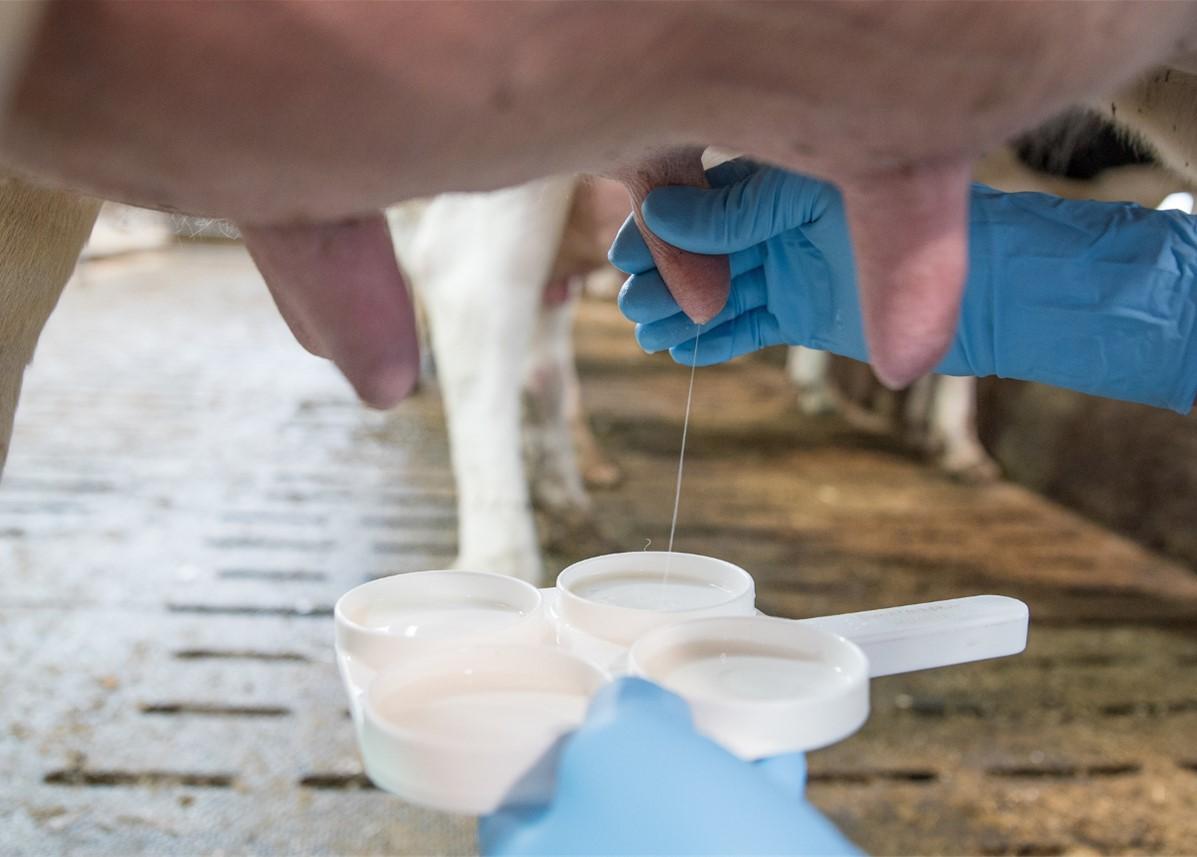
Traditional dry cow management strategies recommended treating every cow with intramammary antibiotics at dry-off. This strategy, also known as “blanket dry cow treatment”, was recommended to help 1) cure any existing mastitis infections and 2) prevent new mastitis infections from occurring during the dry period.
Although this management approach served dairy producers well in the past, public concern related to the over utilization of antibiotics in animal production (and in society as a whole) has encouraged the development of a new approach for addressing mastitis concerns during the dry period. This strategy, called “selective dry cow therapy”, utilizes a targeted approach to dry cow treatment, where antibiotic treatment is reserved only for cows that are most likely to benefit from it. With selective dry cow therapy, not every quarter of every cow receives an antibiotic treatment. Studies show that when applied properly, selective dry cow therapy can be an effective strategy for managing mastitis during the dry period. Not only does this help reduce antibiotic utilization, but it can also represent a substantial cost savings. A recently published meta-analysis indicated that utilizing a selective dry cow treatment program can reduce antibiotic utilization for dry cows by up to 66%.
“selective dry cow therapy was just as effective as blanket dry cow therapy...when an internal teat sealant was utilized on every quarter...”
Focal point
|
Who should consider selective dry cow therapy?
Studies indicate that selective dry cow therapy is most effective in herds with an average annual bulk tank somatic cell count (SCC) under 250,000 cells/mL. It is recommended that herds with an average SCC above 250,000 cells/mL address the herd-level mastitis issues before turning to selective dry cow therapy.
It is important to note that use of an internal teat sealant is highly recommended for farms utilizing selective dry cow therapy. The teat sealant should be utilized on every quarter of every cow at dry-off, including healthy ones. A recent study indicated that selective dry cow therapy was just as effective as blanket dry cow therapy in improving and maintaining udder health during the subsequent lactation, but only when an internal teat sealant was utilized on every quarter of every cow.
Herds who are good candidates for utilizing selective dry cow therapy also have control over contagious mastitis pathogens (Staphylococcus aureus, Streptococcus agalactiae). These mastitis pathogens are those that can be transferred between cows and can be prevented through proper milking and sanitation procedures. It is also important to have personnel who can consistently and properly administer the dry treatment and/or teat sealant, implement the selected screening strategy, and monitor progress of the program to determine whether or not it is working.
Which cows should receive dry treatment?
The biggest challenge with selective dry cow therapy is, of course, finding the “right” cows to administer antibiotic to. A good selection criteria is imperative to ensure that cows that should be treated aren’t missed. There are two selection strategies that can be utilized. The first requires the use of DHI or other SCC records on individual cows while the second involves milk culturing.
Data from the University of Minnesota indicates that cows should receive intramammary antibiotics and an internal teat sealant in all four quarters if they have a SCC over 200,000 cells/mL at ANY point during the current lactation, more than 2 mastitis infections during the current lactation, or a mastitis infection within the 14 days leading up to dry-off. If a cow does not meet any of these three criteria, then producers can forgo the antibiotic treatment and administer only the internal teat sealant in all four quarters.

If reliable SCC data are not available, milk cultures can be performed in the few days before dry-off. It is important that the samples for the milk cultures be collected aseptically. A sample of milk from each quarter can be collected into the same sample tube to get a result for an individual cow. Quarter samples can also collected and kept separate for individual quarter cultures, which allows producers to identify and treat only those quarters that are infected. Samples can be sent to a local veterinary clinic for analysis or cultured on-farm using on-farm culturing equipment, which can be purchased for $100 to $200. Cows that show a positive culture should be treated with intramammary antibiotics and an internal teat sealant at dry-off.
Producers who wish to take selective dry cow therapy to the next level may consider combining the use of SCC data and culture data. With this approach, individual quarter milk samples from any cow that is selected as a candidate for intramammary treatment at dry-off based on SCC or mastitis history during the current lactation can be cultured to help target the exact quarter(s) that should be treated.
How do we know if the program is working?
As with any management protocol, it is important to keep tabs on how things are going. Producers using selective dry-cow therapy should closely monitor SCC, particularly during early lactation. They should also assess development of mastitis immediately after dry-off and throughout the dry period. If something seems amiss, selection and treatment protocols should be reexamined.
A good relationship with the herd veterinarian is critical. Producers should always consult their veterinarian to develop a mastitis treatment protocol that is appropriate for their specific situation.
This article appears on October 4, 2022, in Volume 3, Issue 3 of the Maryland Milk Moos newsletter.
Maryland Milk Moo's, October 4, 2022, Vol.3, Issue 3
Maryland Milk Moos is a quarterly newsletter published by the University of Maryland Extension that focuses on dairy topics related to Nutrition and Production, Herd Management, and Forage Production. To subscribe to this newsletter, click the button below to enter your contact information.